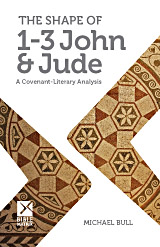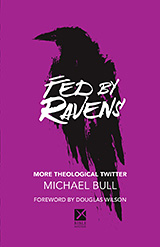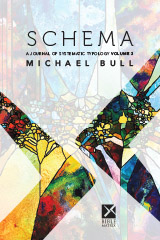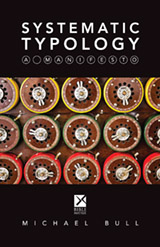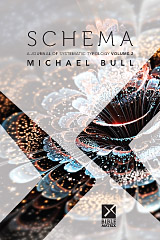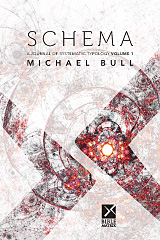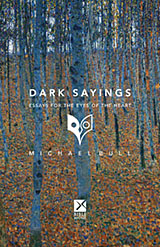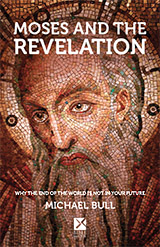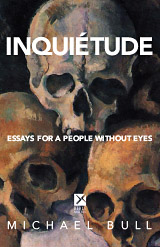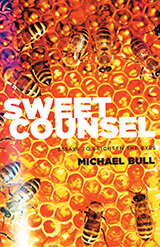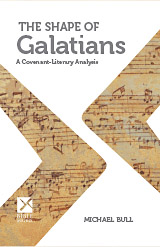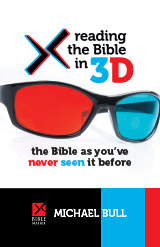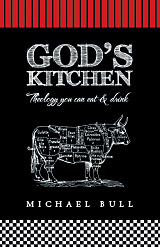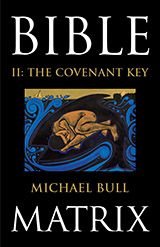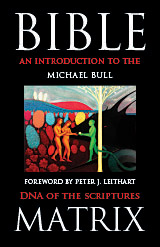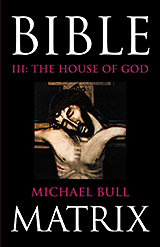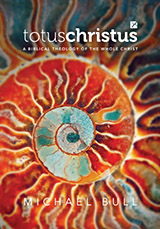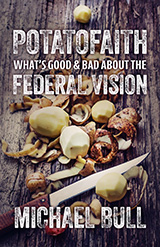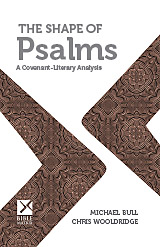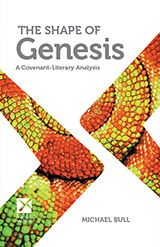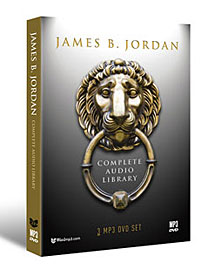May
18
2010
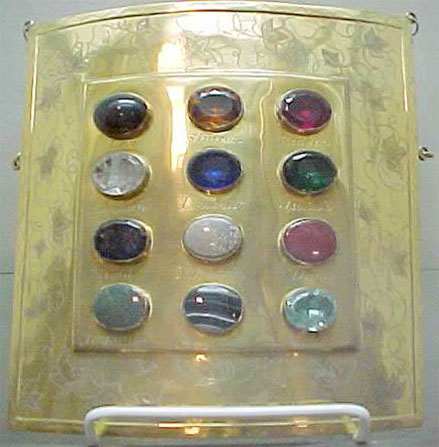
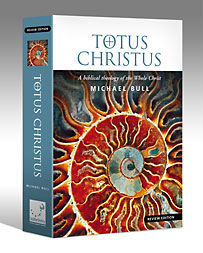 .
.
We know from the history of Noah that the rainbow was not a reminder to man of the Covenant but a reminder to God. [1] A subtle parallel is found in Numbers 16. After the rebellion of Korah, Dathan and Abiram, Moses called for a censer showdown between Aaron and the false priests. The rebels were swallowed by the land, and, as usual, the false priests were consumed by the fire of the Lord. [2]
Continue reading
Comments Off | tags: Aaron, breastplate, Esther, Isaiah, Mediator, Moses, Numbers | posted in Biblical Theology, Totus Christus
Mar
2
2010
or Meat to Eat – 2
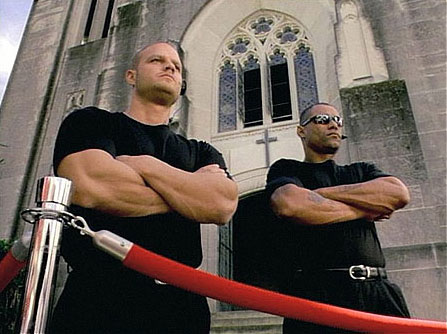
[From last time] …Under this new Levitical Law, a new “Garden” would be constructed, and a great many animals would be slaughtered and offered within its insatiable boundary. It was a King’s Table. Yahweh was already Omega, already Solomon. But Israel, not yet humble, desired Omega food, the food of “ascension.” Not satisfied with the bread of “priestly” obedience, they lobbied for meat to eat.
“So it was that quails came up at evening and covered the camp, and in the morning the dew lay all around the camp.” —Exodus 16:13
We mentioned that bread is Alpha food. Wine, and sometimes meat, are Omega foods. Firstfruits and Pentecost are about grain. Tabernacles is about the grape and olive harvests. This final feast is also the one where the Lord says if you want to carve up an ox or feel like strong drink, knock yourself out (ie. spare no expense).
Continue reading
Comments Off | tags: Exodus, Herod, Moses, Numbers | posted in Biblical Theology, The Last Days
Feb
24
2010
or Meat to Eat – 1
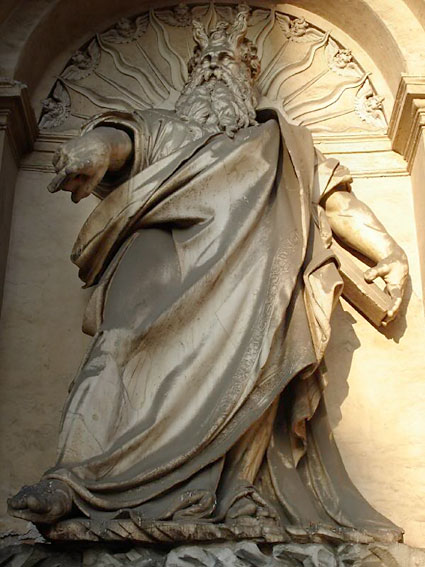
“And whanne Moises cam doun fro the hil of Synai, he helde twei tablis of witnessyng, and he wiste not that his face was horned of the felouschipe of Goddis word..” —Exodus 34:29, Wycliffe
Perhaps you’ve seen those bumper stickers that say, “If we’re not meant to eat animals, why are they made of meat?”
NOTE: THIS POST HAS BEEN REMIXED AND INCLUDED IN GOD’S KITCHEN.
You must be logged in to see the rest of this post.
Join now for a year for $15!
From memory, men didn’t eat meat until after the flood. The history from Adam to Noah follows the Feasts pattern, with Adam as the Alpha male (heh) and Noah as the mature and wise Omega male of that initial process. [1] Moving from vegetarianism (literally “seeds”) to meat was not only a sign of judgment, but a sign of greater judgment put into the hands of God’s Man. [2] Noah could eat meat, and he could also sentence murderers to death. Man now had teeth in a way he had never had them before. Even we use the phrase “toothless” to refer to ineffective pieces of legislation. As mentioned elsewhere here, teeth and tusks and ivory and horns are symbols of justice, whether they be on men, animals, or altars. [3] A blood-covered horn means the crime is atoned for. Just as Christ was a Lamb with seven horns, worthy to open the scroll, Moses came down from Sinai with not only a “scroll” (or tablets in that case) but “horns.” This translation has been dismissed as errant, but perhaps the reason for it should not be dismissed so easily. Here’s my attempt at an interpretation.
Continue reading
Comments Off | tags: Adam, Exodus, Incense Altar, Ivory, Moses, Noah, Tabernacle, Vegetarianism | posted in Biblical Theology, Creation
Jan
10
2010

or Being a Truly Impure Thinker
“If you love me, you will keep my commandments.” John 14:15
NOTE: THIS POST HAS BEEN REMIXED AND INCLUDED IN GOD’S KITCHEN.
You must be logged in to see the rest of this post.
Join now for a year for $15!
Peter Leithart wrote this week:
How do we know things? Experimentation, deduction, observation?
In Genesis, knowledge is first associated with two things – with food and with sex. There is a tree of the knowledge of good and evil, whose fruit opens the eyes of Adam and Eve so that they perceive that they are naked. Then Adam knows his wife and she conceives Cain.
If we want a strictly biblical answer: Knowledge is eating. Knowledge is sex.
Continue reading
Comments Off | tags: Add new tag, Communion, Eugen Rosenstock-Huessy, Food laws, Maturity, Moses, Peter Leithart, Solomon, Wisdom | posted in Biblical Theology, Christian Life
Jan
8
2010
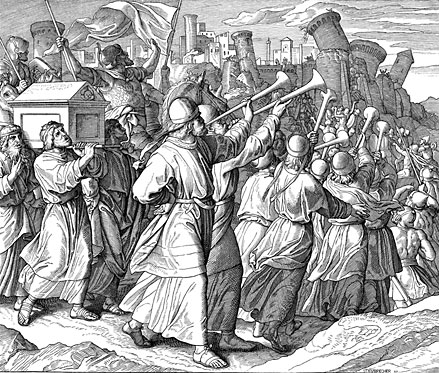
[Link to parts 1 and 2.]
In Revelation 4-5, Jesus ascends and opens the New Covenant scroll (Firstfruits). As Moses, He then opens the Law to Israel (Pentecost). These open seals lead into the partial judgments of the Trumpets. They summon a new generation of Israel and warn the old. The last trumpet, as in Joshua, is itself “seven thunders” (John’s “Little Book”) that bring total destruction to the defiant city, in this case, Herod’s Babylon (Atonement). This is the last trumpet Paul referred to.[1]
Continue reading
Comments Off | tags: Elijah, Feasts, James Jordan, Moses, Peter Leithart, Revelation | posted in Biblical Theology, The Last Days
Dec
18
2009
or The Crash of AD70

Now a river went out of Eden to water the garden, and from there it parted and became four riverheads. The name of the first is Pishon; it is the one which skirts the whole land of Havilah, where there is gold. And the gold of that land is good. Bdellium and the onyx stone are there. The name of the second river is Gihon; it is the one which goes around the whole land of Cush. The name of the third river is Hiddekel; it is the one which goes toward the east of Assyria. The fourth river is the Euphrates. (Genesis 2:10-14)
After the Herod and Shylock post, I had one complaint that the Worship as Commerce tag didn’t really do what it said on the tin, so I hope to capture it (briefly?) here. Now, where to start? As James Jordan explains, the idea begins in Eden.
Continue reading
1 comment | tags: AD70, Amalek, Gehenna, Genesis, Gnosticism, Herod, High Priest, Isaiah, Manna, Moses, Numbers 5, Revelation, Solomon, Temple, Worship as commerce | posted in Against Hyperpreterism, Biblical Theology, Christian Life, Creation, Ethics, Quotes, The Last Days, Totus Christus
Dec
7
2009
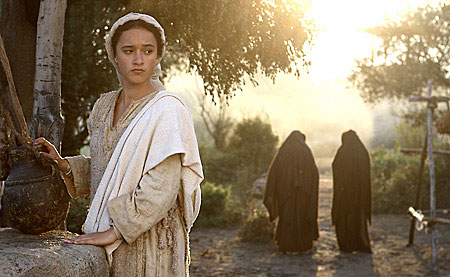
or Receiving the Implanted Word
Mary’s song, like most songs in the Bible, seemed to me to contain mostly extraneous material. My modern mind couldn’t relate her words to the version of Christianity I was familiar with. I guess that’s because it was a version bereft of much understanding of the Old Testament.
Mary’s song seems to follow the matrix pattern. As such, it is a new Creation, and a new Tabernacle, (John 1:14, “dwelt” is literally “tabernacled”). It is the liturgical response of the bride to the promise of Covenant succession – the Covenant succession. This new generation was also regeneration.
Continue reading
Comments Off | tags: Atonement, Azal, Bible Matrix, Christmas, Daniel, Dispensationalism, Feasts, Holy Place, Luke, Mary, Moses, Revelation | posted in Biblical Theology, The Last Days
Dec
3
2009
or Weeping over Jerusalem
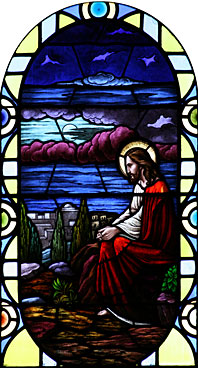 Then Jerusalem, all Judea, and all the region around the Jordan went out to him and were baptized by him in the Jordan, confessing their sins. But when he saw many of the Pharisees and Sadducees coming to his baptism, he said to them, “Brood of vipers! Who warned you to flee from the wrath to come? “Therefore bear fruits worthy of repentance, ”and do not think to say to yourselves, ‘We have Abraham as father.’ For I say to you that God is able to raise up children to Abraham from these stones.” —Matthew 3:5-9
Then Jerusalem, all Judea, and all the region around the Jordan went out to him and were baptized by him in the Jordan, confessing their sins. But when he saw many of the Pharisees and Sadducees coming to his baptism, he said to them, “Brood of vipers! Who warned you to flee from the wrath to come? “Therefore bear fruits worthy of repentance, ”and do not think to say to yourselves, ‘We have Abraham as father.’ For I say to you that God is able to raise up children to Abraham from these stones.” —Matthew 3:5-9
Then, as He was now drawing near the descent of the Mount of Olives, the whole multitude of the disciples began to rejoice and praise God with a loud voice for all the mighty works they had seen, saying: ” ‘Blessed is the King who comes in the name of the LORD!’ Peace in heaven and glory in the highest!” And some of the Pharisees called to Him from the crowd, “Teacher, rebuke Your disciples.” But He answered and said to them, “I tell you that if these should keep silent, the stones would immediately cry out.” —Luke 19:37-40
The Bible is consistent with its symbols, so what is it with stones crying out? Continue reading
Comments Off | tags: Abel, Cain, Elijah, Exodus, Hebrews, John the Baptist, Joshua, Lot, Moses, Resurrection, Toby Sumpter, Uri Brito | posted in Biblical Theology, Quotes, The Last Days
Dec
1
2009

Elijah’s twelve stone altar “died” in the place of Israel, paying the debt for her idolatries, burned to nothing as a priest’s daughter who had committed harlotries. That passage follows the Bible matrix, with the prophets of Baal slaughtered as the scapegoat (washed from the Land in the “Laver” of Kidron, no less).
Did Ahab and Jezebel repent? No, they filled up their sins.[1] So Elijah made an exodus to Sinai. This, too, follows the pattern. Elijah is a new Moses, and he makes a new Covenant for the remnant which will bring about the destruction of Ahab’s dynasty. His “new creation” will be built on the corpse of the old.
Continue reading
Comments Off | tags: Ahab, Bible Matrix, Covenant curse, Elijah, Jezebel, Moses | posted in Biblical Theology, Totus Christus
Nov
25
2009
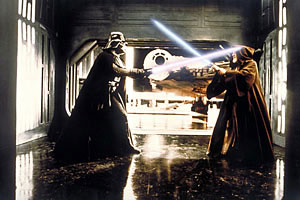
“If you strike me down, I shall become more powerful
than you can possibly imagine.” —Ben Kenobi
Herod and Vader are maggot-filled men. They are the living dead. Christ and Kenobi are willing to die. They become the dead living.
One factor the Bible matrix continually brings out in its various occurrences throughout Scripture is the transformation of knowledge into wisdom — through death. In some profound way, knowledge is singular but wisdom is plural.
The Lord gives Adam the knowledge of the Law, and Adam is expected to obey and become wise. We can see, in his failure to confess his sin, that he was no wiser than before.
Continue reading
Comments Off | tags: Deuteronomy, Film, Marriage, Moses, Wisdom | posted in Biblical Theology, Christian Life
 .
.










